How Much Does an eCommerce Website Development Cost in India?

The recent past has seen growth in the Indian eCommerce landscape, which has changed the way business functions and where there is consumption of buyers. With more than 500 million users with internet access and increasing dependency on online shopping, it had swiftly emerged to become one of the largest as well as among the fastest-growing eCommerce markets in the world. From small businesses to big enterprises, there is a need for an aptly designed and robust eCommerce website to tap into this very profitable market. However, the cost of developing the same in India varies greatly based on the platform used, the intricacy of the design, features, and customization.
In this article, we'll delve into the different factors involved in eCommerce development India costs, breaking those down in detail in order to better inform business decisions.
Overview of eCommerce in India at a Glance

The eCommerce sector in India has seen an incredible growth trajectory since internet penetration began to grow significantly along with smartphone penetration and digital literacy. The eCommerce market in India was around $120 billion at the beginning of 2023 and is expected to touch $350 billion by 2030. Supporting this trend is big players like Amazon and Flipkart, as well as niche markets like Myntra and BigBasket, whose online shoppers will project 500 million by 2025. According to a recent report, India's eCommerce sales had grown by 19% in 2022 itself and the growth was also fueled by the increasing usage of online payment systems like UPI.
E-commerce adoption at this rate has made room for businesses of all sizes-right from big retail houses to small local brands. With the eagerness of entrepreneurs to tap into the market by creating their own eCommerce websites, national and even global reach is achieved.
What Is eCommerce Website Development?

eCommerce website development is the process of building a website for companies in selling products or services on the internet to clients. Generally, it encompasses some interface such as UI/UX design and secure payment gateways, inventory management, shopping cart systems, and search engine optimization. But one would also expect it to seamlessly integrate into the logistics and delivery systems, ensuring that the customers' orders get handled efficiently.
Development of eCommerce website can be ranged from simple template-based website up to highly customized depending upon the type of business and therefore business requirements. In India, online stores can be developed on various platforms such as WooCommerce, Magento, and Shopify.
Why a Strong eCommerce Website is Needed

A good eCommerce website is the backbone to success online. Businesses, with the on-growing demand of online shopping in India, are missing out on reaching a wider audience if they do not have well-designed websites. For that reason, there are several reasons why a well-built website is needed:
- User Experience: There is a responsive and intuitive website that attracts more customers and improves the kind of user experience they are exposed to, resulting in much better conversion rates.
- Brand Credibility: It enhances your brand perception and comes up with an assurance of trustworthiness in the minds of potential customers.
- Security: An eCommerce website with secure payment gateways and encrypted transactions is essential to ensure customer data safety to make long-term relationships.
- Scalability:A good scale will enable your site to scale up along with increased traffic and expansion of your product catalog so as to have smooth performance even if your business grows.
Benefits of Investing in e-Commerce Website Development in India
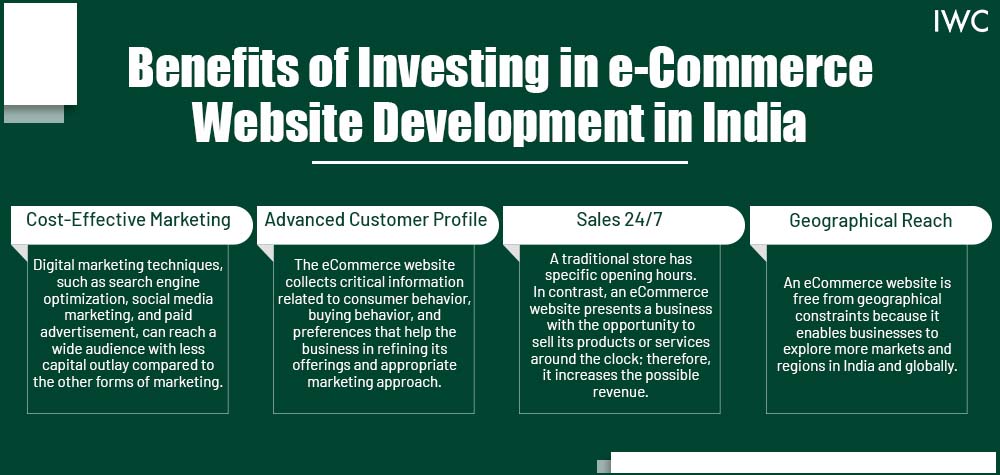
e-Commerce website development is quite often regarded as one of the most profitable investments a
business can make in India because it provides companies with the following benefits:
- Cost-Effective Marketing: Digital marketing techniques, such as search engine optimization, social media marketing, and paid advertisement, can reach a wide audience with less capital outlay compared to the other forms of marketing.
- Advanced Customer Profile: The eCommerce website collects critical information related to consumer behavior, buying behavior, and preferences that help the business in refining its offerings and appropriate marketing approach.
- A traditional store has specific opening hours. In contrast, an eCommerce website presents a business with the opportunity to sell its products or services around the clock; therefore, it increases the possible revenue.
- Geographical Reach: An eCommerce website is free from geographical constraints because it enables businesses to explore more markets and regions in India and globally.
Scope of eCommerce in India
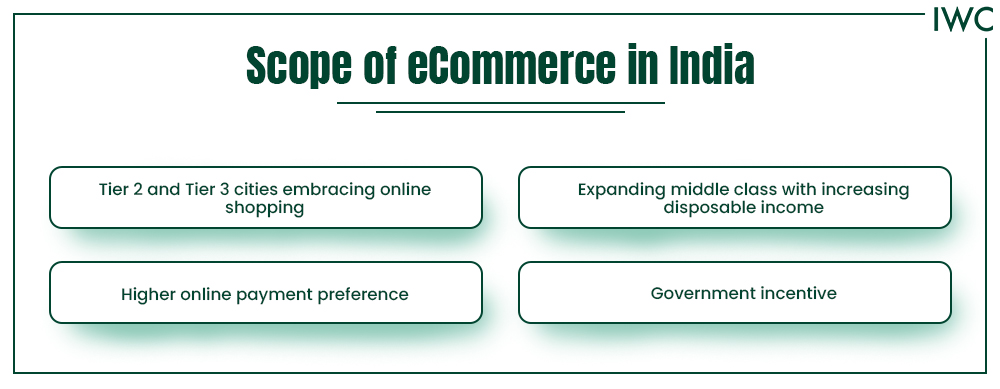
The scale of eCommerce in India will keep growing with the development in the technological and digital infrastructure along with online behavior of consumers. With this, the Digital India initiative and a young, technology-aware population have placed India at one of the fastest-growing eCommerce markets around the world. Major growth drivers are as follows:
- Tier 2 and Tier 3 cities embracing online shopping : Many consumers from non-metro cities are adopting eCommerce because of better access to internet and smartphones.
- Expanding middle class with increasing disposable income: More and more people are browsing online since more and more people are becoming a part of the ever-growing middle class that is gaining in earning potential.
- Higher online payment preference:Secure options for online payments - through mediums like UPI, for instance - have increased the confidence quotient for online shopping
- Government incentive: Schemes like Make in India and Startup India have encouraged numerous young entrepreneurs to launch their e-commerce businesses.
Cost Break-up for Creating eCommerce Website in India
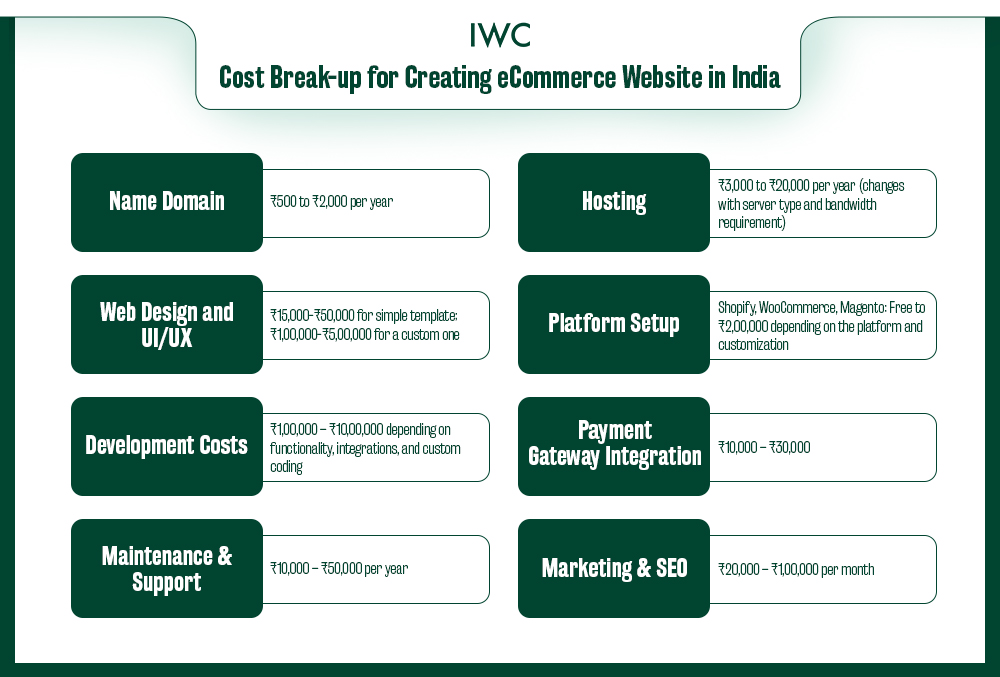
The cost for developing an eCommerce website in India is pretty high, and it goes on changing with the complexity and features. The broad estimate of the costs involved is given in the lines below.
- Name Domain: ₹500 to ₹2,000 per year
- Hosting: ₹3,000 to ₹20,000 per year (changes with server type and bandwidth requirement)
- Web Design and UI/UX: ₹15,000-₹50,000 for simple template; ₹1,00,000-₹5,00,000 for a custom one
- Platform Setup : Shopify, WooCommerce, Magento: Free to ₹2,00,000 depending on the platform and customization
- Development Costs:₹1,00,000 – ₹10,00,000 depending on functionality, integrations, and custom coding
- Payment Gateway Integration:₹10,000 – ₹30,000
- Maintenance & Support: ₹10,000 – ₹50,000 per year
- Marketing & SEO: ₹20,000 – ₹1,00,000 per month
eCommerce Website Types
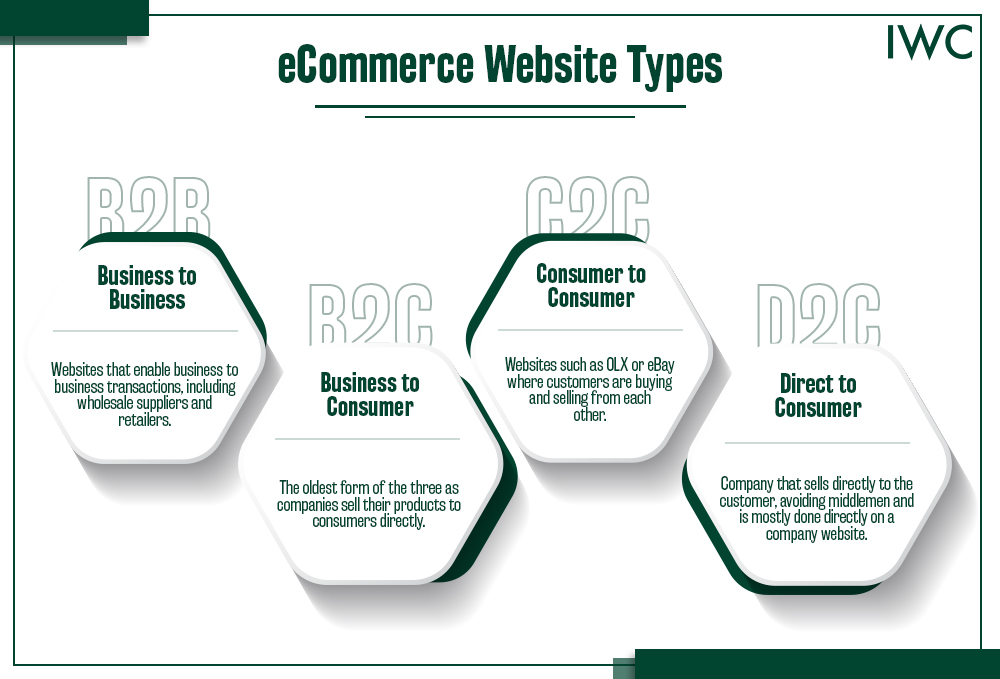
For other business requirements, there are several types of eCommerce websites:
- B2B (Business-to-Business): Websites that enable business-to-business transactions, including wholesale suppliers and retailers.
- B2C (Business-to-Consumer): The oldest form of the three as companies sell their products to consumers directly.
- C2C (Consumer-to-Consumer): Websites such as OLX or eBay where customers are buying and selling from each other.
- D2C (Direct-to-Consumer):Company that sells directly to the customer, avoiding middlemen and is mostly done directly on a company website.
Which Platform/Software Is Best for eCommerce Website Design?
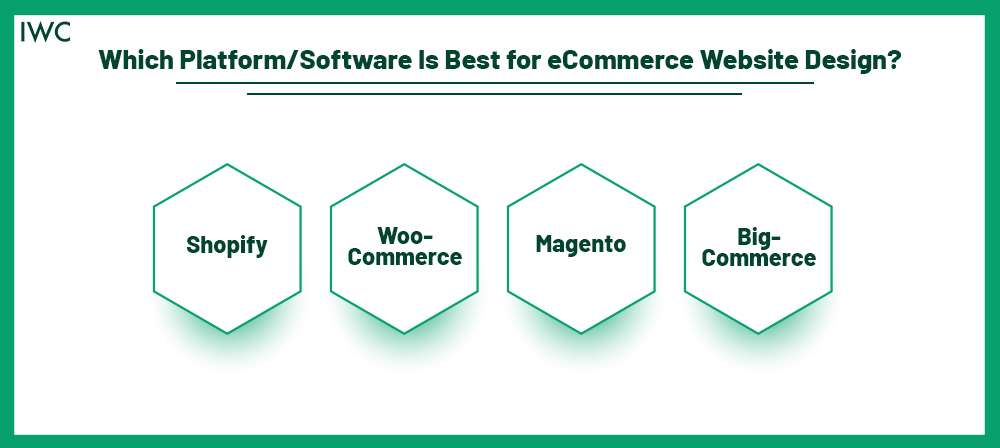
The choice of the platform/software is crucial in eCommerce development. Some of the most popular platforms include:
- Shopify:Generally, suitable for small to medium-sized businesses. Easiest account setup, can scale.
- WooCommerce: A Wordpress plugin, best suited for business sites having very small catalogs or another blog.
- Magento: Flexible and powerful ecommerce platform ideal for large businesses that have complex requirements.
- BigCommerce: Known by its great scalability and even out-of-the-box features.
Is Shopify Free for eCommerce Website Design?
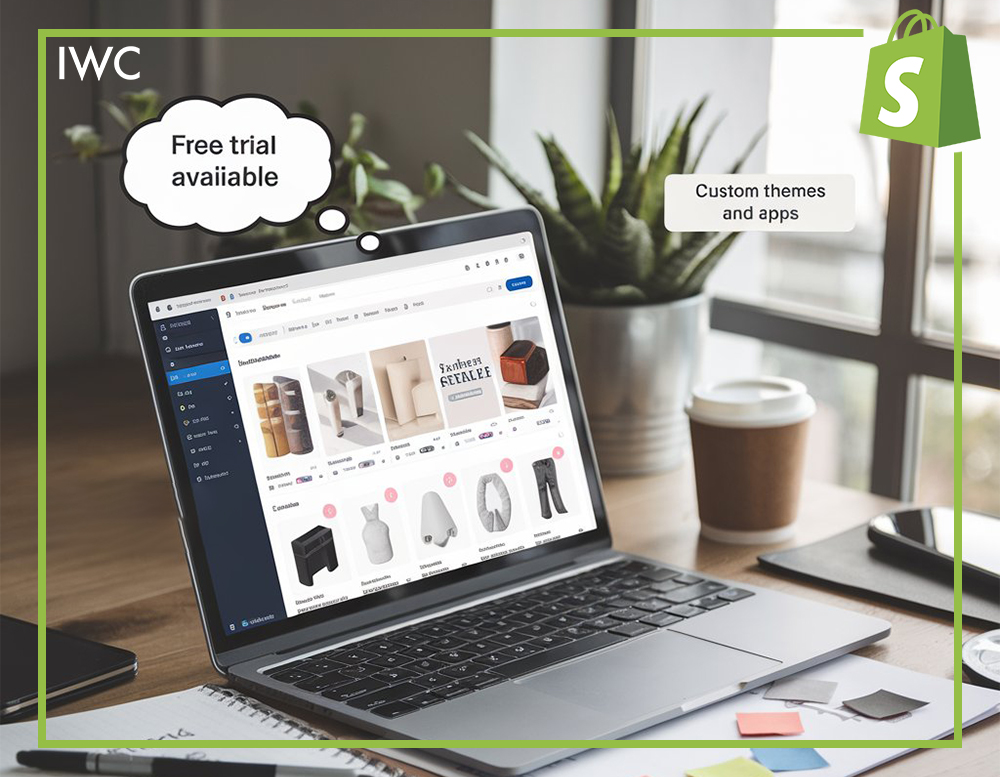
Shopify isn't free either, but Shopify does provide all its customers with a 14-day free trial. Consumers then have to enroll in one of the plans available at a very affordable price starting from ₹2,000 a month for the Basic version and up to ₹30,000 per month for the higher-tier plan. All the basic necessities such as hosting, payment gateways, and customer support are provided with each plan, so Shopify remains one of the most cost-effective solutions for small business and start-ups.
Related Post: Is Shopify Good for Ecommerce Website? [Pros and Cons]
Development Process of eCommerce
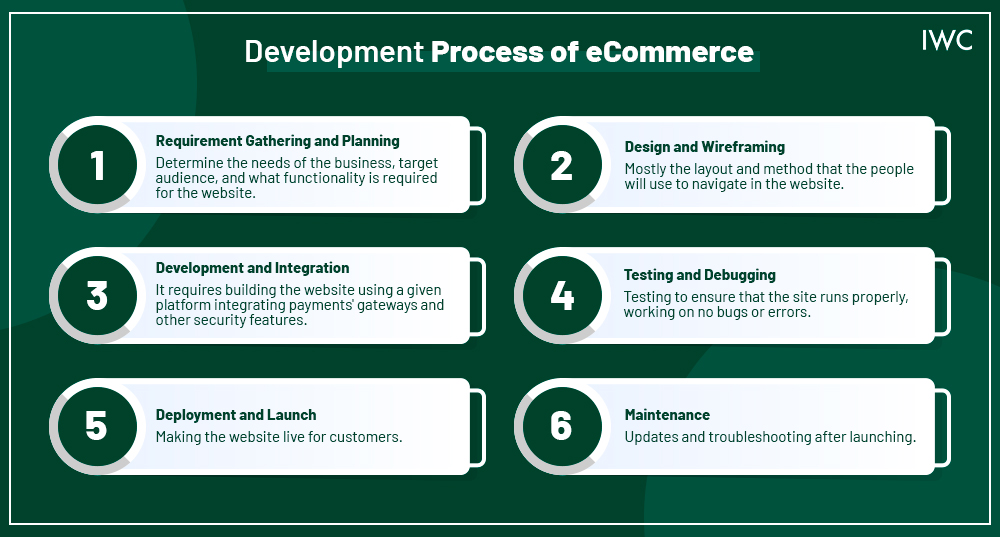
In general, creating an eCommerce website encompasses the following steps:
- Requirement Gathering and Planning: Determine the needs of the business, target audience, and what functionality is required for the website.
- Design and Wireframing: Mostly the layout and method that the people will use to navigate in the website.
- Development and Integration: It requires building the website using a given platform integrating payments' gateways and other security features.
- Testing and Debugging: Testing to ensure that the site runs properly, working on no bugs or errors.
- Deployment and Launch: Making the website live for customers.
- Maintenance: Updates and troubleshooting after launching.
What causes eCommerce Website Development Costs to Sky Rocket?
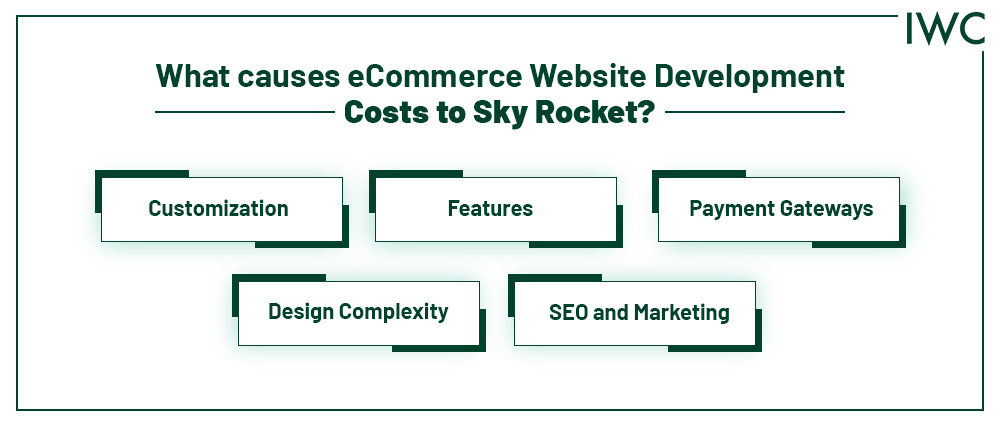
There are a few causes that together form the overall cost of developing an eCommerce website:
- Customization:Websites with ultra customization carry a higher price tag, especially as they involve heavy coding.
- Features: Complex features in the form of AI-based recommendation of products, multilingual, real-time inventory, and many other such additions account for most costs.
- Payment Gateways: The price for integrating and transacting with each payment processor varies.
- Design Complexity: A custom, complex design will cost more to create than using a template.
- SEO and Marketing: The initial cost of an SEO-friendly design and marketing tools adds the expenses needed to be driven to the website.
Cost Comparison by Type of eCommerce Website
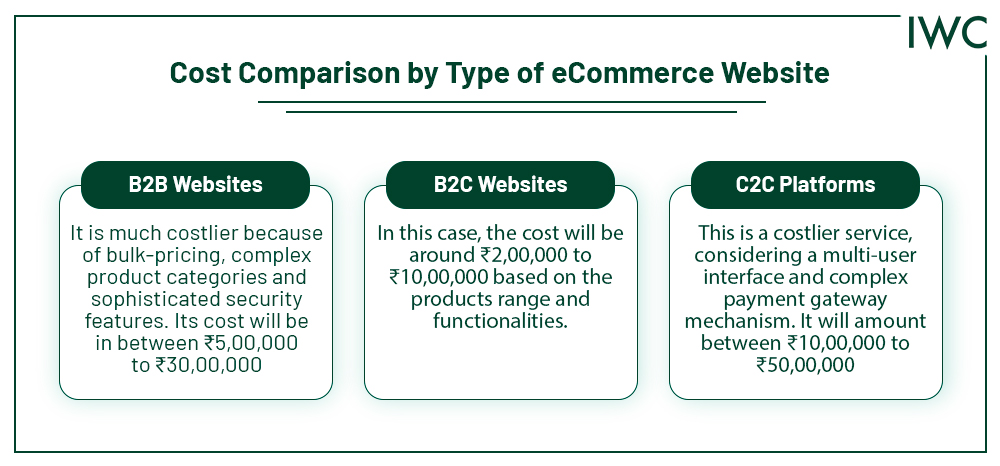
The kind of eCommerce website you build will leave its mark on the cost:
- B2B Websites:It is much costlier because of bulk-pricing, complex product categories and sophisticated security features. Its cost will be in between ₹5,00,000 to ₹30,00,000
- B2C Websites: In this case, the cost will be around ₹2,00,000 to ₹10,00,000 based on the products range and functionalities.
- C2C Platforms: This is a costlier service, considering a multi-user interface and complex payment gateway mechanism. It will amount between ₹10,00,000 to ₹50,00,000
Additional, Hidden Costs to Contemplate
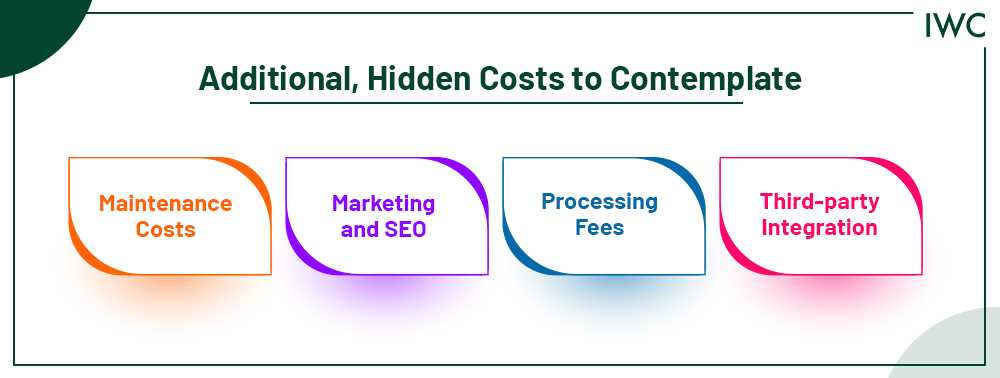
When you are budgeting for developing an eCommerce website, there are some costs that you have to consider that most people don't consider. These include:
- Maintenance Costs: Renewals on servers, bug fixes, and the regularity of security patches.
- Marketing and SEO: Cost to drive traffic through digital marketing.
- Processing Fees:Every transaction is charged by a payment gateway like Razorpay or PayPal.
- Third-party Integration: Charges for third-party tools such as email marketing software, CRM systems, and logistics platforms.
How to Select the Correct Development Partner
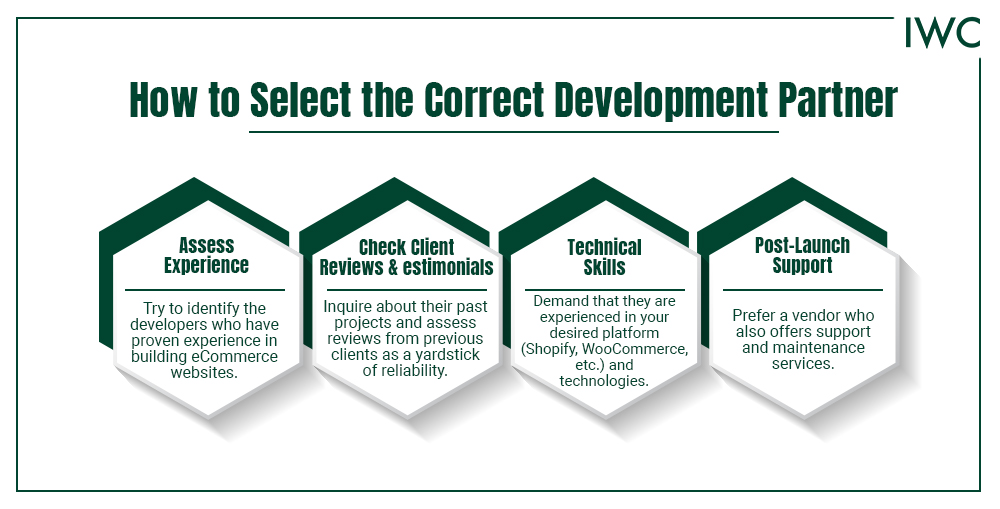
A right eCommerce development company in India is what divides a completed project and one that gets done on time, in budget and meets business objectives. Here's how you can do it:
- Assess Experience: Try to identify the eCommerce website developers in India who have proven experience in building eCommerce websites.
- Check Client Reviews and Testimonials: Inquire about their past projects and assess reviews from previous clients as a yardstick of reliability.
- Technical Skills: Demand that they are experienced in your desired platform (Shopify, WooCommerce, etc.) and technologies.
- Post-Launch Support: Prefer a vendor who also offers support and maintenance services.
The Future Trends of eCommerce Development Costs
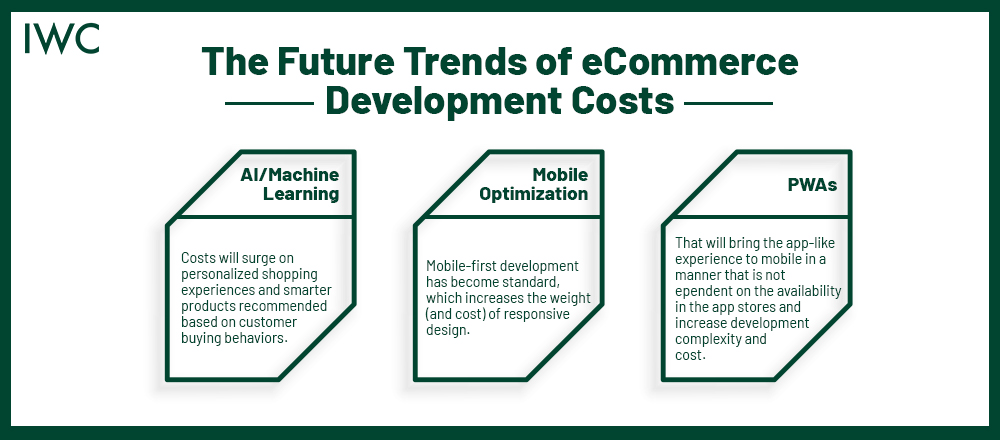
Evolving Technology: Future eCommerce development in India will be characterized by AI, AR/VR, and blockchain technologies. Developed features, such as AI-based personalization and AR product visualization, will increase upfront development costs but may create more customer experience and long-term ROI.
- AI/Machine Learning: Costs will surge on personalized shopping experiences and smarter products recommended based on customer buying behaviors.
- Mobile Optimization: Mobile-first development has become standard, which increases the weight (and cost) of responsive design.
- PWAs: That will bring the app-like experience to mobile in a manner that is not dependent on the availability in the app stores and increase development complexity and cost .
Conclusion
Access to one of the fastest-growing digital markets can be a great opportunity for building an eCommerce website in India, but the cost widely varies based on the platform, features, and level of customization. By understanding the factors that would determine these costs and then choosing the right website development company in India, businesses can create scalable and efficient online stores that help max out all growth potential within budget.
Indeed, a well-developed e-commerce platform stands the test of competition in India's increasing digital space, and with a proper strategy, businesses can gain effective returns on the investment.
Recent Blogs

Questions to Ask Before Hiring a Web Designer?

Stages Of Website Development Process
